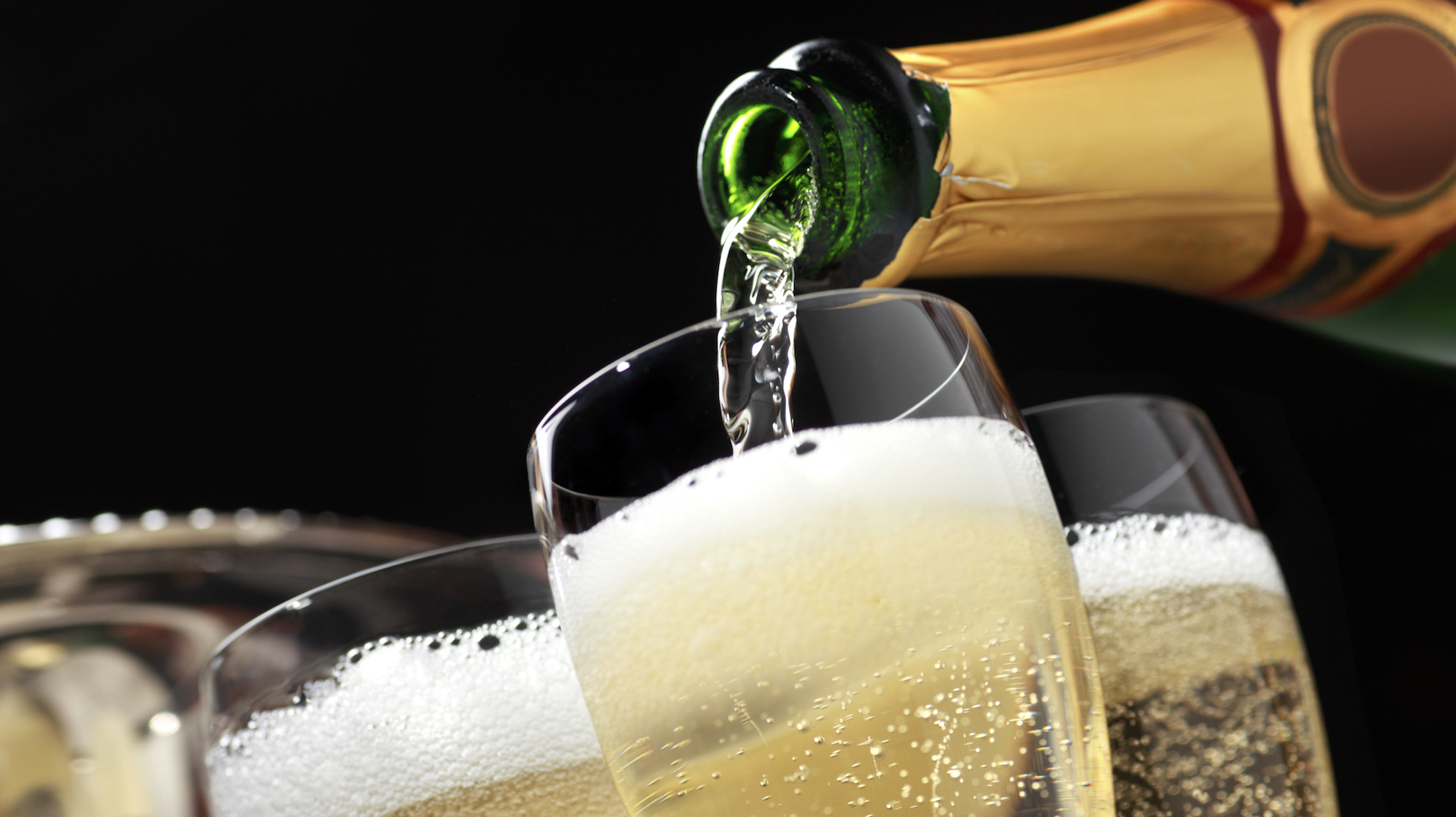
Champagne. It just rolls off the tongue and sounds luxurious, just like you are about to celebrate a special occasion. But wine with bubbles is fun anytime and I’d suggest that we can never drink enough bubbles!
We can thank the Benedictine Monks for creating sparkling wine in 1531. They bottled wine before the fermentation was complete and the excess carbon dioxide stayed in the wine, making it bubbly. An English scientist named Christopher Merret published a paper nearly a century later in which he documented how later adding additional sugar and yeast induces a secondary fermentation in the bottle to produce even more bubbles. This happened right around the time punts were added to the bottom of glass bottles, which allowed them to hold the increased pressure of the gas created. While the stories claim the monk Dom Perignon discovered sparkling wine, he didn’t even enter the abbey until 6 years after Merret published his paper disclosing the now popular Methode Champenoise.
Bubbly wine is now made all over the world. But all bubbly wine is not champagne. That product is grown in the Champagne region of France and uses very specific grapes, usually Pinot Noir, Pinot Meunier, and Chardonnay. The use of the name Champagne has been protected in Europe since 1891 and more broadly in the Treaty of Versailles after World War I. At that time, the Temperance movement was in full swing in the U.S. with Prohibition around the corner and the U.S. did not sign the treaty. This meant you could buy New York State Champagne until 2006 when the U.S. affirmed the right of Champagne region to their name and the use is now slowly ebbing away.
The names for bubbly wine vary around the world: in Spain it is Cava. In Italy it is Spumante In South Africa it is Cap Classique. Germany uses Sekt and in other parts of France it is called Cremant. But for most of the world, it is simply called sparkling wine.
The classic method of making Champagne is Methode Chapenoise. The process is like that described in Merret’s paper. The grapes are harvested, pressed, and the first fermentation process is completed to exhaust the sugar in the grapes. The wine is then bottled and corked with additional yeast and some sugar, which causes a second fermentation, creating carbon dioxide that stays in the bottle in the form of bubbles. The dead yeast cells, called lees, are removed through a process of moving the yeast to the neck of the bottle called riddling. These lees are then frozen and removed quickly from the bottle by uncapping it. While it is open and before the cork is inserted, a sweet dosage is added to set the sweetness of the of the champagne.
If no dosage is added, the dryness is called Brute Nature and these champagnes are aggressively dry and tart – and frankly not as popular. While Champagne was once a very sweet wine, enjoyed as a dessert, it has shifted towards a drier style with less residual sugar. Currently, champagne ranges from the driest – Extra Brut, to Brut, Extra Dry, Sec, Demi-Sec, with the sweetest version being Doux. The most popular dryness currently is Brut with a refreshing crispness and a little sweetness, it is great alone or paired with many foods.
Most champagne that is produced today is Non-Vintage or NV. This means that the winemaker can blend wine from different years to create a more balanced product, but obscuring the actual year of production in the process. While most of the wine used is from the current year, up to 40% can be from prior harvests. This blending allows each estate to keep a relatively consistent “house style” from year to year.
In exceptional years, when the growing conditions are excellent and the wine is notable, the estates will also make a vintage champagne. You can easily tell these because they will have a year indicated on the bottle and all the wine used is from that single year. These are more expensive and potentially suitable for cellaring for a period to age.
Premium champagne produced is called the prestige cuvee and is supposed to represent the best champagne an estate can make. Prestige Cuvees are only made in vintage years, so they don’t happen very often. Usually they will represent 10% or less of the production of champagne, which means they are less than 1% of total sparkling wine production. Each of the great Champagne houses of France makes a prestige cuvee or (cuvee special), such as Moët’s Dom Pérignon, Roederer’s Cristal, Perrier Jouët’s Flower Bottle, Taittinger’s Comtes de Champagne and Veuve Clicquot’s La Grande Dame. Historically, these ultra-high-end sparklers were reserved for the aristocracy and only in the last 100 years or so the entered regular commerce.
Don’t be intimidated by the range of sparkling wines, lots of them are very reasonably priced and are fun to drink. My recommendation is to grab a few bottles of sparkling wine from different countries and see what you like. While that special French Prestige Cuvee might be prefect for a college graduation celebration, bubbles are great for every day drinking too – perhaps celebrating making it through Wednesday.
Cheers!

